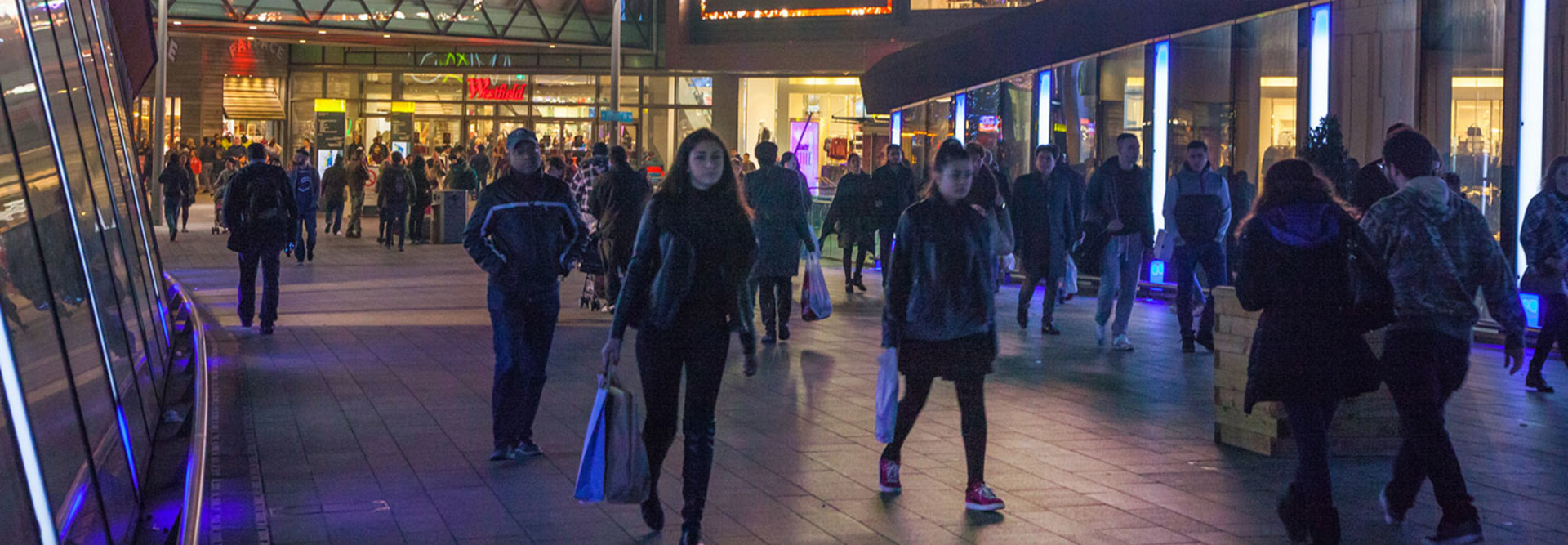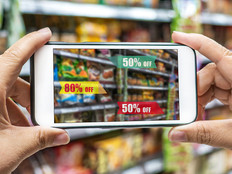5 Ways Retailers Can Use Tech to Make Black Friday and Cyber Monday a Success
In the age of customers nabbing deals on their smartphones while sitting on the couch in their pajamas, Black Friday may not be what it used to be. But that doesn’t mean retailers don’t need to be ready.
If anything, the push toward online sales and digital deals means that retailers need to invest even more in IT infrastructure than before, even if customers are not coming into physical stores. Data is the lifeblood of retailers looking to gain an edge in the digital age.
Retailers can collect and use data to be more efficient and boost sales this Black Friday and Cyber Monday. They can do so through technologies that analyze foot traffic, give them more insights into customer behavior and let shoppers purchase more seamlessly. At the same time, they need to invest in their networking infrastructure and mobile solutions to deliver a solid online experience to customers who do not come into stores.
“Data, data, data is what helps retailers be proactive in their store planning, their store sales, their marketing,” says Nicole Leinbach Reyhle, founder of the retail industry website Retail Minded.
What does the data say about what to expect this Black Friday and Cyber Monday?
Just 40 percent of shoppers plan to hit stores on Nov. 24, the day after Thanksgiving and the unofficial start of the holiday shopping season, according to a nationwide survey of U.S. shoppers from marketing solutions firm Market Track.
A separate study by consultancy PwC found that only 35 percent of shoppers who plan to shop during Thanksgiving week will do so on Black Friday this year, down sharply from 51 percent last year and 59 percent in 2015. Nearly a third (30 percent) of consumers plan to do the majority of their Black Friday shopping only online, PwC found.
As for Cyber Monday, Adobe expects that Nov. 27 will become the largest online shopping day in history, generating $6.6 billion in sales, which would represent a 16.5 percent increase compared to last year.
Here are five ways retailers can use tech to make the most of the start of the holiday shopping season (Ideally, many of these investments would have been made months ago to give retailers the time to test and refine their implementation. If nothing else, this can be a guide for the rest of the holiday shopping season or for next year’s Black Friday.):
1. Track Customer Data to Optimize Sales
For retailers that want to capture data about their customers, Reyhle recommended a technology called Dor, a wireless, thermal-sensing people counter and analytics dashboard.
The technology creates heat maps of store foot traffic and helps gather accurate data without violating customers’ privacy, Reyhle says. Knowing how many customers are in stores and using the analytics to parse that data helps retailers be more proactive in staffing and marketing, helping them save money.
If stores know how many customers are inside, they can bring in appropriate levels of staff to deliver strong customer service. They can also use the analytics dashboard to monitor promotional campaigns, improve advertisements and turn marketing-driven visitors into paying customers. Dor’s pricing is also competitive for small business retailers.
“It helps optimize what retailers have control over, allowing them to be proactive,” Reyhle says.
Retailers should also work with their point of sale solution provider to get as much data analytics as possible about last year’s sales data and real-time sales data, Reyhle recommends. That can help them identify which products are the hottest sellers, allowing retailers to gift wrap those products in advance.
“They’re likely to increase their sell-through when they make these conveniences available throughout the holiday shopping season,” she says.
2. Invest in Loyalty Programs and Reward Loyal Customers
Retailers can also set up and optimize loyalty programs using technology. Reyhle recommends a mobile app called Perka, which allows merchants to reward customers for frequent purchases. The app has an $85 monthly subscription fee.
Perka works with “individual businesses to tailor their loyalty program to whatever suits their current needs, whether that’s to encourage repeat visits, improve sales of a particular product, or increase transactions,” TechCrunch reports, adding that retailers “can run multiple programs through Perka, and include rewards for multiple products or services at once.”
E-commerce platform Shopify notes that Black Friday and Cyber Monday represent opportune times “to build relationships with your previous customers and get them to come back.”
Shopify recommends that retailers send emails to and retarget previous customers with the best deals. “Give existing fans and customers the opportunity to access a sale earlier or give them exclusive sales just for being a subscriber on your email list,” the company notes. “This also allows you to encourage email signups by offering exclusive sales they won't have access to otherwise.”
3. Use Social Media to Drive Sales
Reyhle notes that “the path to purchase is no longer what it used to be.” Sometimes, she says, customers might start their shopping journey on Instagram, Twitter or Facebook and then end up in a store.
Retailers need to invest heavily in using social media to drive sales. “Create plenty of different images to share across your various social media accounts and spread them out,” point of sale vendor Nova notes in a blog post. “Posting a reminder about your sale two or three times a week with different images each time can really boost interest and hype around your deals.”
The platform Like2Buy helps drive sales directly from Instagram, Reyhle says. “Savvy retailers definitely incorporate that” into their omnichannel strategies, she says.
4. Make Sure Your Website Can Handle the Traffic Blitz
Retailers need to ensure their websites can handle the flood of traffic expected to come their way on Cyber Monday when shoppers will be hunting for online deals.
Reyhle says that retailers need to make sure their website is backed up and backed up often, and check with their hosting provider to make sure that the host has backups.
Shopify advises retailers to plan for contingencies in case their website goes down or a shipping company becomes too busy. IT staff should also be on call to handle any emergencies.
Retailers should also test their websites to see how much traffic they can handle via server load capacity tests, Shopify advises. Reyhle notes that retailers can use platforms such as Shopify or BigCommerce to guarantee uptimes.
5. Create a Comprehensive Mobile Retail Experience
According to IBM, 54 percent of all e-commerce traffic is on mobile platforms. Last year, IBM said “nearly 60 percent of all e-commerce traffic right now is coming from mobile devices, but that smartphones and tablets are only accounting for 44 percent of actual sales,” TechCrunch reports.
“Clearly, we should expect this trend to continue and possibly increase. What this means for you as a store owner is that thinking mobile first is very important,” Shopify notes.
Retailers need to consider the user experience on mobile. They need to make sure it is easy and intuitive to make purchases and ensure that their websites use responsive design.
Reyhle says that retailers need to make sure their websites are mobile-friendly, easy to navigate and involve “as few clicks as possible” between entering the site and completing a purchase. She also recommends that retailers incorporate shipping fees into price points.
As with all IT solutions, security needs to be paramount for mobile platforms. If retailers work with e-commerce platforms, they can often get extra layers of website and mobile security built in, sometimes as a turnkey platform, Reyhle notes.









